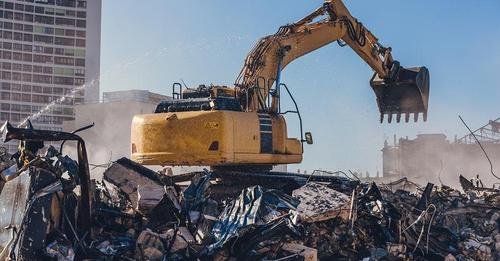Asbestos, once considered a miracle material for its fire-resistant and insulating properties, is now recognized as a significant health hazard. Exposure to asbestos fibers can lead to severe respiratory diseases, including mesothelioma, lung cancer, and asbestosis. Therefore, when asbestos-containing materials (ACMs) are found in buildings, it’s essential to remove them safely and effectively to minimize the risk of exposure. In this blog, we’ll explore the various techniques and methods of asbestos removal, their advantages, limitations, and considerations for choosing the right approach.
Table of Contents
ToggleWhat is Asbestos Removal?
Asbestos removal, also known as asbestos abatement, refers to the process of safely removing and disposing of ACMs from buildings or structures. It involves careful planning, specialized equipment, and strict safety measures to prevent the release of asbestos fibers into the air and minimize the risk of exposure to workers and occupants.
Techniques and Methods of Asbestos Removal
- Encapsulation: Encapsulation involves applying a sealant or coating to ACMs to encapsulate the asbestos fibers and prevent them from being released into the air. This method is commonly used for asbestos-containing materials that are in good condition and unlikely to be disturbed, such as asbestos-containing insulation or roofing materials. While encapsulation can be a cost-effective and minimally invasive solution, it may not be suitable for all types of ACMs or situations.
- Enclosure: Enclosure involves constructing a physical barrier around ACMs to prevent disturbance and fiber release. This method is often used for larger areas or buildings with extensive asbestos contamination. Enclosure may involve erecting temporary walls, barriers, or containment structures around the affected area to isolate and contain the asbestos materials. While enclosure can effectively prevent exposure to asbestos fibers, it may not be a feasible solution for all scenarios, particularly in occupied buildings or areas with limited space.
- Removal: Removal is the most common and effective method of asbestos abatement. It involves physically removing ACMs from the building or structure and disposing of them in accordance with regulatory requirements. Removal techniques vary depending on the type and location of the asbestos materials. For example, wet removal techniques may be used to minimize fiber release during demolition or renovation activities, while dry removal methods may be employed for less friable materials such as asbestos-containing floor tiles. Regardless of the technique used, asbestos removal should be performed by trained professionals using specialized equipment and following strict safety protocols.
- Encapsulation and Removal: In some cases, a combination of encapsulation and removal may be employed to address asbestos hazards. For example, encapsulation may be used to stabilize ACMs in areas where removal is not feasible or cost-effective, followed by removal of more extensively damaged or deteriorated materials. This hybrid approach allows for targeted asbestos management while minimizing disruption and exposure risks.
Considerations for Choosing the Right Method
- Type and Condition of ACMs: The type and condition of asbestos-containing materials will influence the choice of removal method. Materials that are friable (easily crumbled or damaged) may require removal, while non-friable materials in good condition may be suitable for encapsulation or enclosure.
- Extent of Contamination: The extent of asbestos contamination within a building or structure will also impact the choice of removal method. Extensive contamination may necessitate removal of all ACMs, while localized contamination may be addressed through encapsulation or enclosure.
- Occupancy and Accessibility: Considerations such as building occupancy, accessibility, and the presence of sensitive occupants (e.g., children, elderly) will influence the feasibility of different removal methods. Enclosure may be preferable in occupied buildings to minimize disruption and exposure risks, while removal may be necessary in unoccupied or industrial settings.
- Regulatory Requirements: Compliance with local, state, and federal regulations governing asbestos removal is essential. Ensure that the chosen removal method meets regulatory requirements and follows industry best practices to protect the health and safety of workers and occupants.
Conclusion
Asbestos removal is a critical aspect of managing asbestos hazards in buildings and structures. Understanding the various techniques and methods of asbestos removal, including encapsulation, enclosure, removal, and hybrid approaches, is essential for effectively addressing asbestos contamination and minimizing exposure risks. When choosing the right removal method, consider factors such as the type and condition of ACMs, extent of contamination, occupancy and accessibility, and regulatory requirements. By selecting the appropriate removal method and working with trained professionals, you can ensure the safe and effective management of asbestos hazards and protect the health and well-being of building occupants and workers.










Find Us on Socials